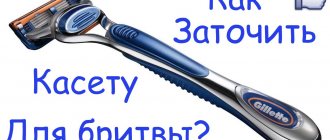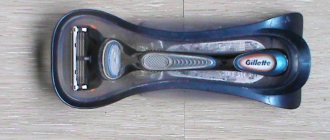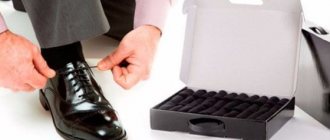Velor is a beautiful, but rather capricious material. It looks attractive due to its velvety surface. Its pile is longer than that of nubuck. Velor is more reminiscent of suede, but it is considered more expensive in comparison and is produced differently.
Various models are made from this material: sandals, moccasins, ankle boots and boots. But velor does not like moisture - rain, dew, wet snow. Consumers believe (quite rightly) that such shoes are elegant, but not practical. Velor is not suitable for daily wear, especially in rainy autumn or early spring. The temptation to walk in elegant shoes requires careful attention to their cleaning and restoration.
Fabric Features
Velor is a material that has a velvety surface on the front side. Made from cloth yarn. Distinctive features from velvet: the presence of long, thick pile and softness.
It can be of natural or artificial origin. Natural velor is made from cotton and wool. Materials with a slight addition of synthetic fibers are popular.
The difference between velor and corduroy is that the latter has a longitudinal rib on the front side. Recommendations on how to care for corduroy and velor are practically the same.
Reasons for the popularity of velor and its properties
The closest relative of this fabric is velvet, but it does not have the fleecy pile that gives velor such softness and heat-insulating properties.
The nature of the origin of this fabric is revealed by its name. Velours means velvet in French. To indicate the differences between these fabrics in the Russian language, the French interpretation has taken root as a designation of the presence of differences from velvet.
Areas of application of velor fabrics:
- Items of clothing.
- Automotive industry
- Interior solutions, furniture.
These fabrics are widely used due to their practicality and rich appearance. Made from silk and natural wool, they were an attribute of wealth and position in society. They can often be found among nobles on the canvases of famous artists. Garments made from velor fabric are very pleasant to wear.
In the age of global fascination with cars, decorating their interiors required unusual and practical solutions. Regular operation of the machine places increased demands on the wear resistance and strength of the fabric. Natural velvet and velor did not meet these high requirements. With the advent of synthetic analogues of classic fabrics, it has become possible to complete interior trim according to any request. Synthetic velor has become a very popular material. Japanese car manufacturers are especially fond of this material.
In the footwear industry, the requirements for raw materials are even higher. It should be both very wearable and mechanically strong, as well as inexpensive and visually attractive. Unlike textile, shoe velor is non-woven. It is made from soft leathers with a fleecy front part. This material looks very impressive, but requires special care, similar to caring for suede. Difficult care for velor shoes, although burdensome, is necessary, since without it they will not last very long.
Basic washing tips
The surface of the material consists of small fibers that form a beautiful texture. Improper care of velor fabric can cause abrasions. How to wash velor correctly so that the item looks neat for a long time and does not wear out? It is recommended to use these tips:
- It is forbidden to pre-soak the product;
- It is advisable to use liquid soaps and washing powders for children’s clothes;
- cannot be washed in hot water; the optimal temperature is 30 degrees;
- It is not recommended to use bleach or detergents containing aggressive components;
- Things need to be rinsed thoroughly so that no traces of detergent remain.
Attention
Before washing a velor dress or other item of clothing made from this fabric, you need to read the information on the label.
Basic rules of care
The benefit of velor shoes is not only their appearance, but also their comfort. It fits well on the foot, is light and durable. It just requires careful treatment of yourself. You can keep it in order by following simple care rules.
When returning home, the owner of a comfortable and beautiful pair should clean it as quickly as possible: do not wait for dust, dirt or snow to penetrate the product. You need to wipe the sole carefully so that water does not leave stains on the upper part.
What should not be done with any leather product also applies to this material.
- It is not recommended to place close to heat sources when shoes need to be dried.
- It should only be stored in its pure form in a shoe box, placing crumpled paper in the toe of the shoe, or using special lasts and spacers.
Interestingly, although velor does not like moisture, it is recommended to hold it for a short time over light steam . This is necessary in order to refresh the look of the shoes and make the pile not too wrinkled.
Treatment of shiny, dented, and tarnished areas is done using an eraser or a piece of thick fabric. There is advice: take fine sandpaper, but in this case you need very light touches to the surface, which do not deform, but straighten the pile.
How to wash a velor suit
Recently, a sporty style of clothing has been trending. The question of how to wash a velor tracksuit becomes relevant. It is imperative to follow the above recommendations and remember that the top and bottom are always washed at the same time. This way you can avoid differences in items based on color saturation and fabric texture.
Due to the fact that the material may have a wool, cotton or synthetic base, this should be taken into account when selecting a detergent.
Advantages of velor materials
Despite the variety of raw materials and production methods, all velors have common advantages.
- Strength is one of the main qualities of velor. The high density of the fabric guarantees its high wear resistance.
- Velor retains its quality for many years, does not stretch or shrink.
- Pleasant tactile impressions from touching the fabric strengthen the decision to purchase this material.
- Velor retains heat well and creates a feeling of coziness and comfort.
- Natural fabrics “breathe” well.
- Velor made from natural raw materials does not cause allergic reactions in the body.
- The fibers, together with the primer, fix particles of coloring pigments well. Velor has a durable, uniform color that lasts well for a long period.
- The aesthetic qualities of the material satisfy the most demanding consumers. Fabric tends to reflect light waves in such a way that mysterious highlights and halftones are formed. The canvases fit the shapes well and create a luxurious look.
- With all the richness of external impressions, the material is easy to care for. You can quite successfully care for the products yourself.
Hand wash
The soap solution is dissolved in warm water. It is not recommended to keep the product in liquid for a long time. Before washing children's velor clothes, prepare a soap solution from baby soap or low concentration powder.
Attention. Velor items for newborns are washed only with safe soaps that do not provoke allergic reactions.
After rubbing the product a little, drain the water. To avoid streaks, rinse at least twice. To avoid deformation, do not twist it, just squeeze it a little.
On a note
This is useful to know. If grease gets in, stains are removed with a piece of dried black bread, which absorbs such contaminants well.
If you need to quickly dry an item of clothing, use a terry towel. When rolled up, excess moisture is absorbed.
What is the best way to wash a velor coat? In order not to spoil an expensive bulky item, it is more advisable to take it to the dry cleaner.
Boots made of velor or suede, which is better?
Paying tribute to fashion, you want to look stylish and elegant at any time of the year. But you should approach the choice of a winter pair thoroughly and give preference to the one that, in addition to beauty, will not harm your health. Shoes should provide warmth and comfort to your feet. It was already noted above that velor is vulnerable to adverse weather conditions. In such shoes, your feet will quickly freeze and get wet. Velor is rarely used for the production of warm winter boots.
Suede boots
Velor boots
Choose winter boots made of natural suede. The properties and characteristics of this leather are perfect for changing weather conditions.
Velor boots can be an excellent demi-season solution. They will be appropriate for parties, visiting theaters and museums, or dining in a restaurant.
Helpful information:
Women's velor robe
ECCO shoe size chart
Is velor washable?
Before washing velor in a washing machine, it is advisable to perform the following sequence of actions:
- The products must first be turned inside out, this will protect the fibers from damage;
- fasten the zippers (if any);
- set a delicate mode;
- select the desired temperature and minimum number of revolutions (no more than 600);
- do not use the spin function.
If necessary, items made from other fabrics that require delicate care are loaded together.
How is it different from suede and nubuck?
Nubuck, suede and velor are special types of leather. Without deep knowledge of leatherworking, you can easily confuse materials. However, to understand how to distinguish velor from suede, there is no need to study the craft. It is enough to know some of the features of these types of raw materials, which clearly show: velor or suede have become the basis for charming shoes.
To understand the difference between these similar materials, it is enough to carefully examine the product. Natural suede is made from the skins of elk, deer, and small breeds of farm animals. For its production, materials of excellent quality are used, without the slightest defect. Differences in tanning should also be taken into account - suede is tanned using the fat method, and velor, like nubuck, is tanned using the chrome method. Another characteristic difference between suede is that both the front and back parts of the material are fleecy.
Suede shoes have a different feel - they have a distinct leather smell, which “leather velvet” and nubuck do not have. In addition, it has noticeable pores that other materials do not have. The difference between natural suede can be seen by running your hand over the material - if there are no traces left, then this is it. In addition, velor and suede differ in cost; the first material is significantly more expensive.
Alternative cleaning methods
Thanks to the introduction of advanced technologies, velor is now used for a variety of purposes. They sew jackets, tracksuits, dresses, tops, pants, and make shoes. Upholstery and covers for pieces of furniture look elegant and rich.
It is important to care for them properly. To dry clean a velor sofa at home, use a vacuum cleaner. Can be used regularly. The process uses a special nozzle. Particular attention is paid to joints and seams, where debris and dust accumulate most.
This is useful to know
To return shiny fibers to their previous shape, you need to know how to properly clean velor. Places that need to be brought back to normal are held over hot steam for 4 minutes. Outerwear is also cleaned in the same way, except for items made of drape velor, which are difficult to clean at home. It is advisable to seek the services of specialist dry cleaners.
Small particles or pet hair often collect on the fabric, especially during shedding. How to clean lint from a velor dress? The result of using a special tape with a sticky base for cleaning things is effective. You can also walk over the surface with a wet palm.
How to restore velor? The crushed pile is lifted using a massage hair brush or a stiff clothes brush. Puffers are also used for small pets. They just need to be used carefully so as not to damage the material. The jacket is scratched against the pile, then moved in the opposite direction.
Advantages and disadvantages
The advantages include:
- has a spectacular appearance and will look great as upholstery material for a sofa in the living room or bedroom;
- is able to create an atmosphere of home and comfort in the room;
- it is pleasant to touch;
- able to pass air well;
- does not stretch.
The disadvantages are:
- it is difficult to get rid of absorbed stains;
- the fabric wears out over time and the lint falls out;
- after five years it loses its visual appeal
- requires careful care.
Removing stains
To extend its service life, you can not completely wash the product, but only clean individual stains. To do this, use a weak solution of baby soap. The product is applied to contaminated areas. Use a soft brush to remove stains. Then rinse. Before washing a velor dress, you should also wash the contaminated areas.
How to iron
Velor products practically do not wrinkle. If creases and folds form, ironing becomes necessary. In this case, the following rules must be observed:
- It is better to place a soft cotton towel under the item so that the pile does not shrink;
- in order not to spoil the appearance, first turn the clothes inside out;
- iron in the direction of the fiber to preserve the structure of the material;
- Do not press the device hard against the surface;
- It is recommended to use the steaming function;
- Before smoothing, lightly stretch and fix the fabric on one side.
A skirt or dress is also steamed using a special steam brush. The product is hung on hangers.
Do I need to iron my velor robe? If the item looks untidy, iron it only through wet gauze. Before ironing, you should also cover them with gauze or light cotton cloth. Then the pile should be treated with a soft brush.
There are other methods you can use to make a piece of clothing look neat. For example, a flannelette blanket that is folded several times is suitable. Place a light cotton sheet soaked in hot water. Then they lay out the item, pinning the edges with pins. All this is covered with a dry sheet. After a couple of hours, the product is smoothed out. You can leave the item in this condition overnight.
Sometimes, during ironing, traces from the device remain, shiny spots and scorch marks form. You can get rid of light yellow spots in the following ways:
- Small traces from a very heated device are removed with salt sprinkled on top. Then moisten with lemon juice;
- Boil 1 glass of table vinegar, 2 onions and 50 grams of talc. The cooled mixture is used to treat damaged areas.
- Apply finely grated onion. After a couple of hours the item is washed.
- Hot steam can be used. After the procedure, the shiny areas are cleaned with a brush.
When removing iron marks, it is important not to overdo it, so as not to completely ruin the product.
If dark scorch marks occur, the item cannot be saved.
Manufacturing
Manufacturing is possible in two ways - one- and two-sheet. The first option uses a twig that is inserted under the threads. With its help, loops are obtained, which at the end can be cut or left whole.
Double weave
In a two-layer weave there are a pair of main threads. This method produces two canvases connected by a thread, which is later cut.
For your information! Not only velor material is produced, but also velor threads. They are also called chenille. They are often used in needlework. In the middle of such a flagellum there is a single-twisted thread to which the villi are attached.
Some types of knitwear are also classified as velor. Velor knitwear is made using the plush method - weaving loops with broaching.
You might be interested in what rip stop fabrics are, their composition and features
Caring for artificial velor in a car
To care for velor in your car, you can use a special cleaning brush. A sticky roller intended for clothing is also used.
However, the simplest and most convenient way to care for car covers is a vacuum cleaner. In this case, take a soft nozzle. Due to its fleecy structure, dust quickly accumulates on the material.
How to clean velor in the interior? Stains can be removed with a solution of water and laundry soap. Detergents that are used when cleaning carpets are also good. Before using a new product, apply a small amount to a separate area to avoid unpleasant surprises.
Knowing how to care for velor will allow you to maintain the original appearance of your products for a long time.
We recommend that you find out more information in the video:
© 2022 textiletrend.ru
Use in the footwear industry
To understand what kind of shoe material this is - natural velor, and what products can be made from it, you should pay attention to its properties. It is quite light and soft, but not very resistant to moisture and dirt. Therefore, it is optimal to use it for products that are worn during the dry season - sandals, shoes, light shoes, boots or ankle boots. Velor retains heat well, so winter shoes made of this material warm its owner well in cold weather.
An excellent choice would be classic leather velvet shoes; the material will quickly fit your feet, so tight pumps or uncomfortable oxfords will no longer cause discomfort in a matter of days.










